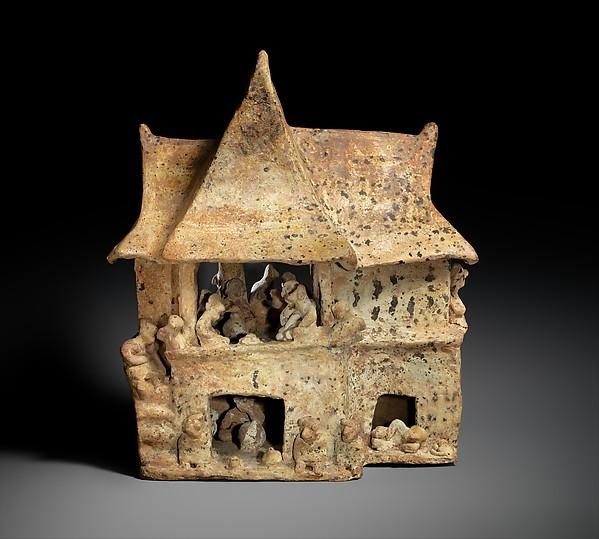
Object Title
House Model
Measurements
H. 12 X W. 10 1/4 x D. 6 3/4 in. (30.5 x 26 x 17.1 cm)
Creation Date
100 B.C.–A.D. 200
Credit Line
Gift of Joanne P. Pearson, in memory of Andrall E. Pearson, 2015
Museum Name
Culture
Country of Origin
Object Type
Materials / Techniques
Object URL
http://www.metmuseum.org/collection/the-collection-online/search/319227
Provenance Information
Collection of Allan L. Long, New York, by 2000; Acquired by Ancient Art of the New World, New York, from Allan L. Long in 2000; Purchased from Ancient Art of the New World, New York, by Andrall E. and Joanne P. Pearson in September 2002; Collection of Andrall E. and Joanne P. Pearson, New York, 2002 to 2015; accepted as a promised gift from Mr. and Mrs. Pearson to The Metropolitan Museum of Art in 2004; given by Mr. and Mrs. Pearson to The Metropolitan Museum of Art in 2015.
Exhibition Information
This object was displayed at the Metropolitan Museum from October 19, 2004 through April 3, 2005 as part of the exhibition Heritage of Power: Ancient Sculpture from West Mexico. The Andrall E. Pearson Family Collection.
Publication Information
Kristi Butterwick, Heritage of Power: Ancient Sculpture from West Mexico. The Andrall E. Pearson Family Collection, New York, The Metropolitan Museum of Art/Yale University Press, 2004: 76-78.
Sarro, Patricia Joan, and James Doyle. "Monumental Imaginings in Mesoamerican Architectural Models." In Design for Eternity: Architectural Models from the Ancient Americas, edited by Joanne Pillsbury. New York: The Metropolitan Museum of Art, 2015, pp. 30–31, 38–39, figs. 27, 38, 39.
Sarro, Patricia Joan, and James Doyle. "Monumental Imaginings in Mesoamerican Architectural Models." In Design for Eternity: Architectural Models from the Ancient Americas, edited by Joanne Pillsbury. New York: The Metropolitan Museum of Art, 2015, pp. 30–31, 38–39, figs. 27, 38, 39.
Section of the AAMD Guidelines relied upon for the exception to 1970
Gift or bequest expected or on loan prior to 2008
Explain why the object fits the exception set forth above
The work was accepted as a promised gift to The Metropolitan Museum of Art in 2004. The work was exhibited at the Metropolitan Museum from October 19, 2004 through April 3, 2005. This architecturally complex, ceramic structure features a feast for the dead with many intricate details. This model provides a rare opportunity to see architectural details that have not survived to the present day, such as plastered and painted thatched roofs. More importantly, the model depicts aspects of ritual and community life as ancient Nayarit artists conceived them. As such this work conveys a sense of place and activity in a way that few other objects do, an especially crucial feature for works of art from a region without contemporary texts.